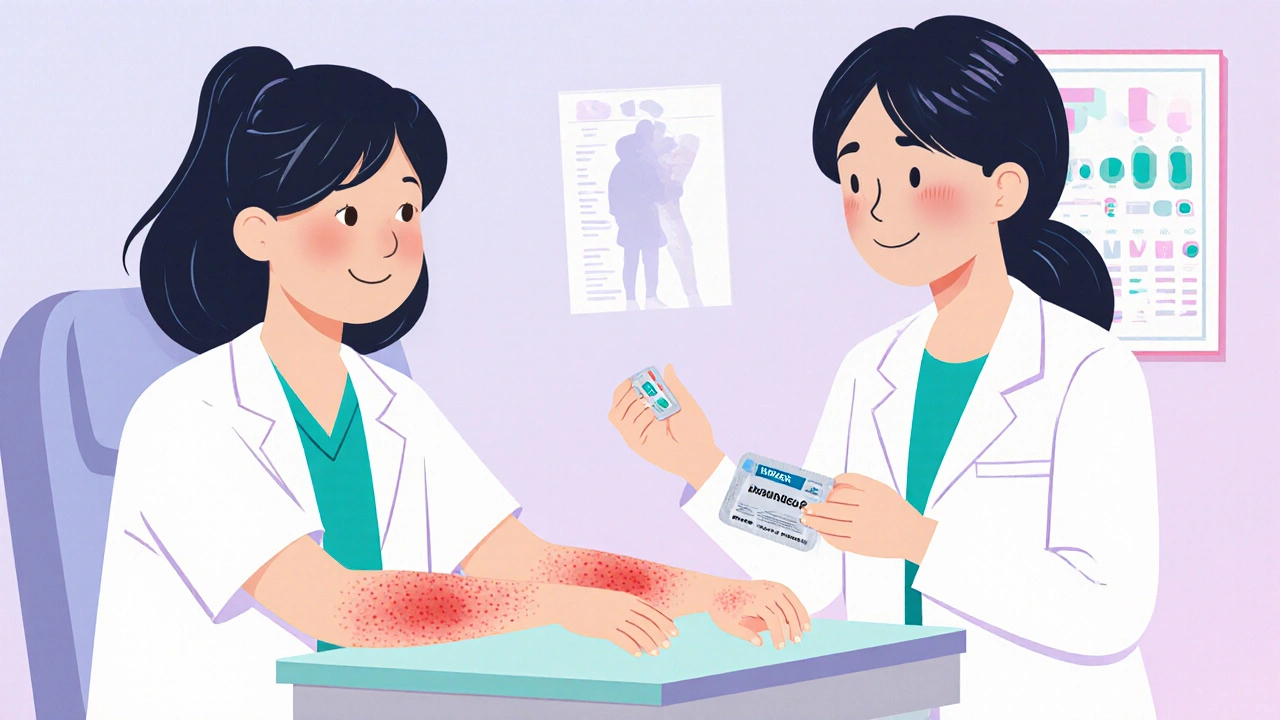Dapsone Side Effects – What You Need to Know
When dealing with dapsone side effects, the unwanted reactions that can happen while using the medication dapsone. Also known as dapsone adverse reactions, they range from mild skin changes to serious blood disorders.
dapsone, an antibacterial and anti‑inflammatory drug prescribed for leprosy, dermatitis herpetiformis, and certain skin conditions works by inhibiting bacterial folate synthesis, but its chemical structure also triggers immune‑mediated pathways. Because of that, hemolysis, the breakdown of red blood cells becomes a common concern, especially in people with G6PD deficiency. methemoglobinemia, a condition where hemoglobin can’t release oxygen effectively is another red‑flag side effect that can turn a simple rash into a medical emergency.
Common Categories of Dapsone Reactions
First, skin‑related issues show up fast: itching, redness, or a classic bullous rash often signal a hypersensitivity response. Second, blood‑related problems like neutropenia, a drop in white blood cells that raises infection risk can develop after weeks of therapy. Third, systemic effects such as liver enzyme elevation or kidney strain may appear in long‑term users. Recognizing these patterns early lets you act before complications worsen.
Why does this matter? Dapsone side effects influence treatment decisions for conditions that otherwise have few options. If a patient develops hemolysis, clinicians often switch to alternative drugs or dose‑adjust. Monitoring blood counts helps detect neutropenia, while pulse‑oximetry and arterial blood gases can catch methemoglobinemia before cyanosis spreads. In practice, the Naranjo Scale guides clinicians in judging whether dapsone truly caused the reaction, linking adverse event assessment to drug safety.
Managing the risk starts with a solid assessment plan. Before prescribing, check for G6PD deficiency, baseline hemoglobin, and complete blood count. During therapy, schedule regular labs at weeks 2, 4, and monthly thereafter. If you spot a drop in hemoglobin of more than 2 g/dL, consider stopping dapsone immediately and start supportive care—often oral folic acid and hydration are enough, but severe cases need transfusion.
When methemoglobinemia is suspected—think shortness of breath, bluish lips, or chocolate‑brown blood—administer methylene blue promptly if levels exceed 20 %. For patients on other oxidant drugs, the threshold is lower, so vigilance is key. Likewise, any sign of rash that spreads or blisters should trigger a drug‑halt and possibly a dermatologist referral to rule out Stevens‑Johnson syndrome.
Another layer of safety involves patient education. Explain how to recognize early signs: “If you notice new bruises, dark urine, or feel unusually tired, call your doctor.” Provide a written checklist so patients can track symptoms between visits. Empowered patients often catch problems sooner than clinicians relying solely on scheduled labs.
In special populations—children, pregnant women, and the elderly—the balance shifts. Kids may tolerate lower doses but are more prone to skin reactions. Pregnant patients need close fetal monitoring because dapsone can cross the placenta, though data are mixed. Older adults often have reduced kidney function, amplifying blood‑related side effects.
Finally, remember that not every reaction means therapy must end. Mild rash may improve with antihistamines, and dose reduction can alleviate hemolysis without sacrificing efficacy. Collaborative decision‑making—discussing risks, benefits, and alternatives—keeps treatment aligned with the patient’s goals.
Below you’ll find a curated collection of articles that dive deeper into each of these topics. From practical dosing guides to detailed case studies on hemolysis and methemoglobinemia, the posts cover everything you need to manage dapsone side effects confidently.
How Dapsone Treats Dermatitis Herpetiformis: Dosage, Side Effects & Alternatives
Learn how dapsone treats dermatitis herpetiformis, from dosing and side‑effects to alternatives and the essential gluten‑free diet.
